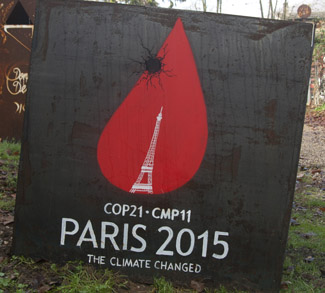There’s some dissonance between responses from the media and the scientific community in the latest international attempt to contain climate change. On one hand, the media response to the Paris UN Conference on Climate Change (COP 21) has been remarkably positive. One might even conclude that Earth has already won, and the potentially disastrous consequences of climate change are no longer a threat – such is the power of the United Nations. Then James Hansen, former NASA scientist and the media-branded “father of climate change awareness,” out and calls the whole process “bullshit” in an interview and the party falls silent.
Who should we believe? The truth is probably somewhere in the middle, right where the slippery intrigue of politics crashes up against the blunt peril of a supercomputer climate model.
The media triumphalism of COP 21 must be viewed in the context of the doomed Copenhagen conference in 2009 (COP 15), which in many ways unfolded in a totally opposite fashion. The failure in Copenhagen was both resounding and long-lasting (the intervening annual COP conferences barely merited mention in the newspapers of the world). And the last-minute face-saving ‘agreement’ at the end of COP 15 – the voluntary, toothless, ‘Intended Nationally-Determined Contributions’ (INDCs) – has now become the base model for COP 21’s rousing success. Some of the triumphalism can be explained simply by the need for positive political momentum given the scientific circumstances surrounding climate change. Some yet stems from the challenge of bridging the hugely divergent interests of 200 some-odd countries in attendance; coming up with any final document should be considered a feat, and in this COP 21 managed to succeed where so many previous conferences had failed.




